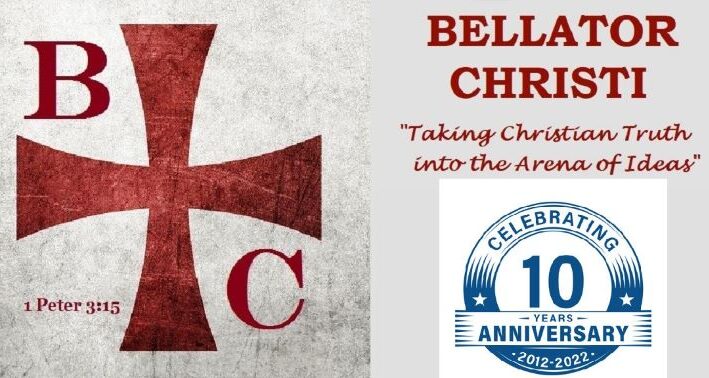By: Brian G. Chilton | December 15, 2020
On December 21, 2020, the world will be treated to a great stellar conjunction of the planets Jupiter and Saturn. A conjunction is when two celestial bodies are so aligned that they appear as one body. Obviously, the two planets are no closer to each other during a conjunction. They only appear to be aligned to the earthly eye. The question is, does this conjunction fit the depiction of the Christmas Star (a.k.a., the Star of Bethlehem)?
Before the options are given, one needs to first examine what is known about the Christmas Star. The Gospel of Matthew is the only NT text to mention the Christmas Star. Matthew provides a few clues to help navigate one’s quest. First, it should be noted that the star appeared after Jesus was born. The wise men are erroneously placed in modern Nativity scenes. However, the biblical text states that the wise men followed the Christmas Star after Jesus was born (Matt. 2:1). Second, whatever the star was, it arose from above the horizon (Matt. 2:2). This indicates that it may have been settled in one place. Third, the star stopped above the place where Jesus was located, which at this time was still Bethlehem. Finally, and concerning the first point, a period of time had elapsed between Jesus’s birth and the appearance of the wise men. Mary and Joseph had already married and settled in a house with Jesus by the time the wise men appeared (Matt. 2:11) This may have been anywhere from a couple of months to a couple of years. What celestial spectacle could cause such a stir? So far as I can tell, there are four options.
Option 1: The Conjunction of Jupiter and Saturn. The first option is the one that is celebrated and in view this year. The Christmas Star could have been this very conjunction. According to Johannes Kepler, the conjunction of Jupiter and Saturn occurred three times in the year 7 BC.[1] The first conjunction occurred on May 27, 7 BC; the second on October 6, 7 BC; and the third on December 1, 7 BC.[2] Ironically, the conjunction has not occurred since the 1600s. However, the conjunction made a triple appearance that particular year. The wise men were astrologers. As professional stargazers, the significance of the conjunction may not have only been between the planetary alignment but that it occurred so frequently, which is extremely rare. Additionally, the conjunction occurs in the constellation Pisces which, according to astrological tradition, is the constellation of the Jews.[3] Since the name Ichthys is both an acronym for Jesus (Gk. Iesous Christos, theos huios, soter; “Jesus Christ, God’s Son, our Savior”) and the name for a fish, early Christians may have inferred special meaning from the triple conjunction in 7 BC. If Jesus were to have been born in 7 BC, then the idea that Jesus was 33 years of age when he was crucified must be tossed aside. If Jesus were crucified in AD 30, he would have been 37. If Jesus were crucified in AD 33, he would have been nearly 40. The only mention of Jesus’s age in the Gospels is a brief note by Luke which says that Jesus was around 30 when the Spirit descended on him like a dove (Luke 3:23). He may have been older than thirty. Luke is only giving an approximation. But one hindrance to the theory is whether this would have given adequate time for the birth of Jesus to the point of the holy family residing in their home. Given that nine months elapsed, it is possible that Jesus was born during the first or second conjunction–the second being more likely as a fall birthdate seems to be more appropriate–with the wise men visiting the holy family at the third conjunction.
Option 2: A Comet. C. J. Humphreys contends that the Christmas Star was not a conjunction at all but rather a comet. According to Humphreys, a comet approached the area in 5 BC.[4] This comet would have been a most spectacular sight and would have rested over the area of Bethlehem. However, not everyone agrees that the comet was seen in 5 BC. Michael Pettem notes that the Chinese recorded a comet in the area, near Altair, around 4 BC.[5] However, Pettem also contends that a comet is not a suitable candidate as most ancients viewed comets as “harbingers of evil events”[6] rather than the birth of the King of kings. This poses a major problem for the comet theory.
Option 3: A Supernova. In 1604, Kepler observed a supernova—a stellar explosion. He believed that the Christmas star may have been a supernova.[7] The major problem with the theory is that there were no known supernovae to have occurred during the reign of King Herod the Great. Additionally, the supernova would have been observed by all. This casts doubt that a supernova alone could be the Christmas Star.
Option 4: Combination of Conjunction and Supernova. Another fascinating theory holds that the triple conjunction of 7 BC was joined by a later supernova in 5 BC. While unrecorded by Roman and Jewish records, a supernova was recorded in 5 BC by the Chinese and Koreans which Mark Kidger postulates to be DO Aquilae.[8] While Pettem is skeptical of Kidger’s conclusions, the combination of the two events does cause one to ponder. If a comet and/or supernova was viewed as a harbinger of bad news and that supernova combined with the triple crown of the conjunction of Jupiter and Saturn, then astronomically speaking, this would have been major news for the wise men and would have urged them to warn the holy family of impending doom.
Conclusion: Quite honestly, my mind bounced back and forth on a few of the theories. At one time, I thought the supernova was the best answer. However, after reviewing the data, it may be that the triple conjunction of Jupiter and Saturn best fit the understanding of the Christmas Star. If so, we are in for a rare treat come December 21st, 2020. At the end of the day, we may have to settle for a bit of uncertainty regarding the exact identity of the Christmas Star. No matter the Star’s identity, the true Star was the One found in the manger on that fateful day. The wise men would later recognize this true Star after being led by the Christmas Star. For those blessed to see the conjunction for ourselves, go out and look up to see what could possibly be the one and same Christmas Star that guided the wise men. Pray for good weather because we have not had an opportunity to witness this since Galileo viewed the conjunction through his spyglass in the 1600s.
About the Author
Brian G. Chilton is the founder of BellatorChristi.com, the host of The Bellator Christi Podcast, and the author of the Layman’s Manual on Christian Apologetics. He received his Master of Divinity in Theology from Liberty University (with high distinction); his Bachelor of Science in Religious Studies and Philosophy from Gardner-Webb University (with honors); and received certification in Christian Apologetics from Biola University. Brian is enrolled in the Ph.D. program in Theology and Apologetics at Liberty University and is a member of the Evangelical Theological Society and the Evangelical Philosophical Society. Brian has served in pastoral roles for over 20 years.
https://www.amazon.com/Laymans-Manual-Christian-Apologetics-Essentials/dp/1532697104
© 2020. BellatorChristi.com.
Notes
[1] Edward W. Watson, “Star,” ed. John D. Barry et al., The Lexham Bible Dictionary (Bellingham, WA: Lexham Press, 2016).
[2] Michael Pettem, “Identifying the Star of Bethlehem,” ARC 33: 287.
[3] Paul J. Achtemeier, Harper & Row and Society of Biblical Literature, Harper’s Bible Dictionary (San Francisco: Harper & Row, 1985), 991.
[4] C. J. Humphreys, “The Star of Bethlehem—A Comet in 5 BC—and the Date of the Birth of Christ,” Quarterly Journal of the Royal Astronomical Society 32 (1991): 389–407.
[5] Pettem, “Identifying the Star of Bethlehem,” ARC: 285.
[6] Ibid.
[7] Arthur C. Clarke, “The Star,” in The Other Side of the Sky (New York, NY: Victor Gollancz, 1987), 175–183.
[8] See chapter nine of Mark R. Kidger, The Star of Bethlehem: An Astronomer’s View (Princeton, NJ: Princeton University Press, 1999.






[…] Source: What Was the Christmas Star? […]